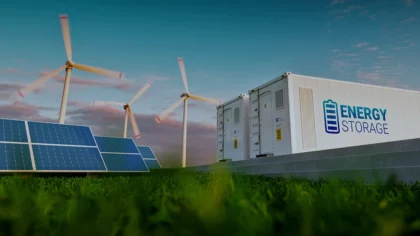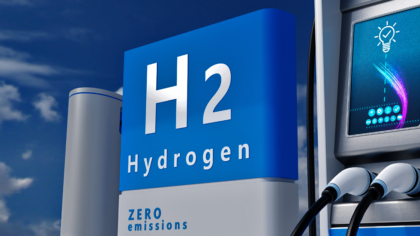It may only take 10 minutes to fully charge an electric vehicle thanks to a recent advancement in solid-state battery technology. Let’s explore the most recent advancements in solid-state batteries, which have the potential to completely alter the power dynamics of the automotive sector and beyond. From the latest industry events to important partnerships in the field, this quarterly solid-state battery news brief for April, May, and June 2024 provides a comprehensive snapshot of what is happening in the global solid-state battery industry today.
Key Highlights From Quarter 2/2024
- A New Battery Era: Solid-state batteries are revolutionizing the energy storage sector, with key players like Volkswagen, Toyota, and startups like LionVolt leading the charge.
- An International Power Play: The global race for solid-state battery development is led by China, Japan, and South Korea, highlighting the strategic importance of this technology for the EV industry and beyond.
- Technological Innovations: Breakthroughs in electrolyte composition and battery architecture, including AI-enhanced material development, are accelerating the pace of innovation.
- The Impact on Business Sectors: The automotive industry stands to benefit the most, with EV manufacturers eyeing solid-state batteries for their potential to reduce costs and improve performance.
- Technological Trends: The adoption of solid-state batteries across different applications signifies a major industry trend. Businesses are urged to invest in research and development (R&D) and seek strategic partnerships to remain competitive.
- Navigating the Challenges Ahead: Overcoming obstacles such as economic viability and mass production efficiency remains critical. The industry must also prepare for evolving regulatory landscapes that will shape the market.
- Looking to the Horizon: The near future will likely see more collaborations and R&D efforts. Mid-term, pilot projects and premium applications of solid-state batteries will emerge.
Also, read Key Highlights From Quarter 1/2024.
How We Researched and Where this Data is from
This article is fueled by insights from the StartUs Insights Discovery Platform, a comprehensive resource tracking more than 4.7 million startups and scaleups globally. Our platform monitors over 20,000 technology trends, covering 100K feeds across various industries.
For this piece, we’ve leveraged the platform to analyze 1000 of the most recent and impactful news evolving around solid-state batteries. Further, our platform allows you to dig deeper into solid-state batteries and investigate other topics based on your preferences. Interested in exploring the latest news, developments, innovations, and breakthroughs relevant to your business? Book a demo with us today and discover the full potential of our platform for your strategic needs.
What’s Currently Happening in Solid-State Batteries?
The Charge Towards a New Battery Era
In comparison to conventional lithium-ion batteries, solid-state batteries promise to offer quicker charging times, longer lifespans, and safer operation. At the forefront of this technological revolution are corporations such as Volkswagen, Toyota, Nissan, and Harvard, as well as startups like the Dutch company LionVolt. For instance, LionVolt recently raised EUR15 million for a plant. The race to transform energy storage and usage is also on, with tech giant Microsoft joining the fray alongside Chinese powerhouses BYD and CATL.
An International Power Play
China, Japan, and South Korea are at the forefront of a genuinely global push for the development of solid-state batteries. Beijing’s national alliance to revitalize the electric vehicle business is evidence of the strategic value that countries attach to this technology. The sector is further poised for a significant shift, with commercial availability anticipated by 2028 and volume production by 2025.
Technological Innovations Sparking Change
Advancements in electrolyte composition and battery architecture are fundamental to the development of solid-state batteries. AI-enhanced material development is expediting the discovery and optimization procedures, while Harvard’s design delivers an astounding 6000 cycles and a 10-minute charge time. These developments hold the key to opening up new avenues for the development of EVs, consumer electronics, and renewable energy storage technologies.
The Impact on Business Sectors
The automotive sector is set to be the primary beneficiary of solid-state batteries, with EV manufacturers eyeing the potential for cost reductions and performance improvements. However, the ripple effect will be felt across various industries. Energy storage solutions will become more efficient, consumer electronics could enjoy longer battery life, and the fossil fuel industry may face increased pressure as renewable energy sources become more viable.
Riding the Wave of Technological Trends
The integration of solid-state batteries into various applications, from EVs to air taxis, signals a trend that businesses cannot ignore. Innovations in charging technology also aim to slash charging times. For business leaders and innovation managers, the message is clear: investing in R&D and forming strategic partnerships are crucial steps to stay ahead in this evolving market.
Navigating the Challenges Ahead
There are many obstacles in the way of solid-state battery domination, which need creative solutions. The key battlegrounds for businesses are achieving economic viability and efficiency in mass production. Industries need to get ready for the regulatory requirements that will define the future market as technology advances.
Looking to the Horizon
We anticipate additional strategic alliance formation and ongoing R&D initiatives in the near future. Mid-term will probably see the launch of pilot projects and the use of solid-state batteries in premium applications. In the long term, the widespread use of solid-state batteries may signal the start of a new era in energy storage and utilization.
Key Highlights From Quarter 1/2024
- Harvard Researchers’ Breakthrough: Significant advancements in solid-state battery technology with the development of novel electrolyte formulations by Harvard researchers, promising quick charging and a battery life of up to 6,000 cycles.
- Corporate Race for Innovation: Companies like Toyota and QuantumScape are fiercely competing to lead the solid-state battery revolution, aiming for commercial availability by 2028 and volume production for electric vehicles by 2025.
- Impact on the Electric Vehicle (EV) Sector: Solid-state batteries are poised to revolutionize the EV sector by offering higher energy densities, longer life cycles, and faster charging times, potentially increasing vehicle range and performance.
- Wider Sectoral Implications: Beyond the automotive industry, the advancements in solid-state batteries could influence consumer electronics and energy storage, with silicon-based solid-state batteries marking notable technological innovations.
- Mixed Sentiments: The advancements in solid-state battery technology are met with optimism for a sustainable future, yet there’s apprehension about the challenges facing the fossil fuel industry and potential technological readiness delays.

Staying informed is key to navigating its complexities and capitalizing on opportunities in the solid-state battery sector. To keep your business ahead of the curve, use our platform to find recent developments and technologies in the solid-state battery. Discovery Platform provides a condensed yet thorough overview of the latest trends and advancements for guiding your investment decisions and identifying effective collaboration opportunities.









